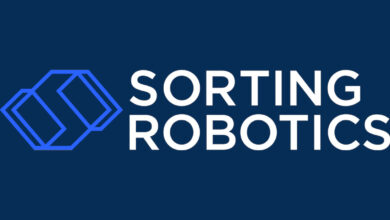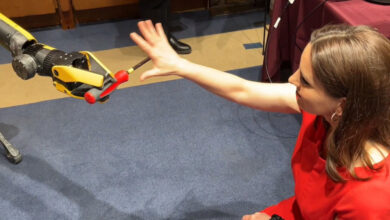The future of humanoid robots with Unitree Robotics co-founder Chen Li · TechNode

About Unitree
Unitree Robotics is a world-renowned robotics company, focusing on the independent research, production, and sales of high-performance quadruped/humanoid robots and dexterous robotic arms. It has been invited to participate in the 2021 CCTV Spring Festival Gala, the 2022 Winter Olympics opening ceremony, and the 2023 Super Bowl, and has been reported by authoritative media such as CCTV News Broadcast and BBC. It is the world’s first company to publicly retail high-performance quadruped robots and the earliest to achieve industry landing.
Note: The article was first published on TechNode China written by Penghui Li and translated by Zinan Zhang.
The global humanoid robot market is expected to reach a peak of $154 billion by 2035. Much like the emergence of generative AI, this rise of robots – not to mention the combination of these two fields –may well pose several questions and spark considerable debate beyond mere tech circles.
Unitree Robotics, which started with quadruped robots and quickly became a global leader in the humanoid robot industry through its general humanoid robot H1, undoubtedly has plenty to say on this.
Here, Chen Li, co-founder of Unitree Robotics, offers a range of insights into the rapidly developing robotics industry.

1. How has the explosive growth in generative AI impacted the robotics field?
Unitree’s development of humanoid robots can be seen as seizing the opportunity. General artificial intelligence (AGI) has made significant progress and breakthroughs. AGI now needs the most suitable carrier to take it forward, and general robots are bound to be one of the future development directions, with humanoid robots being the most straightforward candidate to become general robots. Therefore, we firmly believe that once general artificial intelligence and general humanoid robots are combined, robots can truly enter daily life in the future.
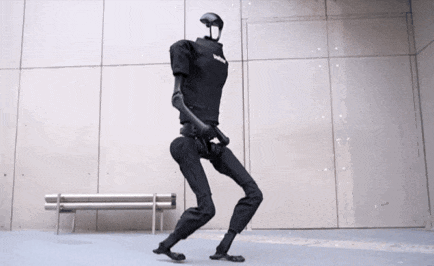
2. What are the biggest challenges in the development of quadruped and biped robots?
Hardware reliability, self-developed complete machines, motion control, sensors of quadruped or humanoid robots, and how to integrate the data obtained from sensors into motion control — such as combining perception and terrain to dynamically adjust leg height in real-time, and then swiftly and stably traversing unstructured terrain… these are all challenges.
As Unitree has a good relevant accumulation of knowledge in quadruped robots, our progress in humanoid robots is relatively faster than others. We started the project on February 23 [2023], and then on August 15, we developed and released the humanoid robot (H1), which took about half a year.
We can make humanoid robots at any time because the core components of Unitree’’s quadruped robots are self-developed. Transferring the relevant technology of quadruped robots to humanoid robots is relatively straightforward for Unitree.
The joint motors, electronic control technology, control algorithms, and other aspects of our humanoid robots are inherited from Unitree’s previous accumulated technology in quadruped robots. Then, in terms of control algorithms, we also draw from the control technology of quadruped robots, using model predictive control.
3. How is Unitree responding to the increasingly complex and dynamic external environment?
The biggest difference between Unitree now and before is the areas we are currently focusing on. Robotics has always been our focus, and it remains our most important direction. However, at the same time, we are also paying more attention to directions related to general artificial intelligence models, considering how to integrate these latest artificial intelligence technologies with robotics to take robot functionality to the next level more effectively. To face a more complex and dynamic external environment, what Unitree needs to do is to keep doing its current job first, and then, driven by research and development, to deliver excellent products and serve our customers well.
4. Some experts have suggested that with the gradual heating up of the robotics race in recent years, the year 2024 will be the “inaugural year” for the robotics industry, especially humanoid robots. How do you view this statement?
If we look solely from the perspective of societal attention to the product, the year 2024 is indeed the inaugural year of the robotics industry. However, 20 or 30 years ago, humanoid robots had already appeared overseas — including in Japan and the United States. We need to look at it from two perspectives.
Of course, I prefer to say that 2024 could be the Year of Humanoid Robots. But this milestone is not policy-driven. In 2023, there were significant breakthroughs and developments in large-scale models and AGI. General artificial intelligence could be applied in various scenarios in the future. In such a scenario, general artificial intelligence would require a carrier. Based on this, humanoid robots have started to gain traction.
Then, what are the necessary conditions for the emergence of the Year of Quadruped and Humanoid Robots? I think, on the one hand, it is the empowerment of AI, and on the other hand, it is the stability, reliability, cost-effectiveness, consistency in production, and the maturity of software and hardware technologies of the products themselves.
5. Unitree also has several quadruped robot products listed on e-commerce platforms such as Taobao, making futuristic products accessible. Could you discuss some observations you have on the domestic quadruped robot market?
Yes, we have listed some quadruped robots on e-commerce platforms, and people can find two consumer-grade quadruped robot products, Go2 AIR and Go2 Pro. Whether it’s in terms of product performance, cost-effectiveness, reliability, or playability, I believe the features and functionalities of Go2 are very relevant to daily life.
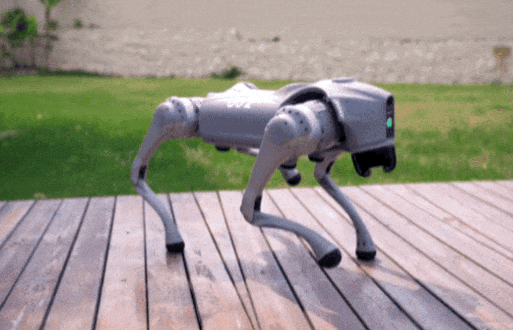
Currently, the consumer-grade quadruped robot market hasn’t fully opened up for several reasons. The first reason is the price, which is still relatively high. With leading companies like Unitree, our current market price for products is around RMB 10,000. However, there is hope to lower the price to a few thousand yuan in the future.
The second reason is interaction. When facing individual consumers, we need to consider how to make quadruped robots have more functions to increase user stickiness. This is something Unitree has been investing in for the long term. If it’s just a remote-controlled robot or robot dog, consumers may lose interest after playing with it for a few days. So we need to give the robot dog more features — such as interaction, interactive AI dialogue, etc. Only in this way can we turn the robot dog into a true electronic pet.
6. Apart from the price difference, what are the most obvious distinctions between Unitree’s consumer-grade and industry-grade robot products?
The most obvious distinction between our consumer-grade and industry-grade robots lies in their performance or functionality. For example, the Go2 AIR and Pro versions of our quadruped robots are consumer-grade. In comparison to our industry-grade B2 robot, the difference lies in their functionality — such as payload capacity. The B2 can handle up to 50 kilograms, while the Go2 AIR is approximately five to eight kilograms, resulting in a significant gap.
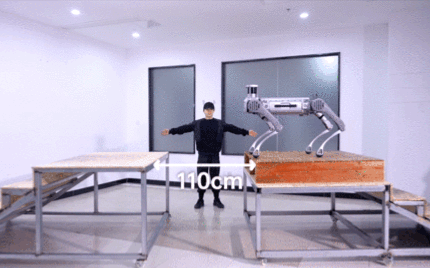
The second difference lies in the protection level. The highest protection level for the B2 can reach IP68, which is the highest level of waterproof and dustproof protection, allowing it to be immersed in water for a long time. However, the Go2 is not waterproof. The third difference is in their mobility or obstacle traversal capabilities. Due to the smaller size of the Go2, compared to the B2, their leg lengths differ, affecting their obstacle traversal performance. For example, the B2 can climb up to 1.2 meters of stairs, while the Go2 can currently only climb 16 centimeters, which is a significant difference.
The fourth difference lies in their battery life. The Go2, with its long-life battery version, can walk continuously for about two hours. However, the B2 can walk continuously for over five hours. Of course, there are also other differences in software and hardware, so the distinction is quite significant.
In terms of application scenarios, consumer-grade robots mainly lean toward home use, including performances, interactive entertainment, and family companionship. The industry-grade B2 is geared towards work. For example, it can be used for inspections, patrols, emergencies, and rescues in industries such as energy, electricity, oil, chemicals, and coal, as well as for police, firefighting, and various arduous, labor-intensive, dangerous, and repetitive tasks that can be replaced by industry-grade robots.
7. What are some unexpected use cases that you’ve come across for these products?
Since many of our Unitree employees have backgrounds in robotics or artificial intelligence, users come from various industries and often propose application scenarios based on the characteristics of our robots, many of which we hadn’t previously considered. I think this is a very positive thing — it broadens Unitree’s product capabilities, and we also work closely with users to develop solutions for these scenarios.
For example, the application of robot dogs in firefighting emergencies is something we hadn’t thought of before. This scenario was suggested by firefighting and rescue personnel. They mentioned that these robot dogs are quite capable — they can climb stairs, traverse mountains, and handle rugged terrain without much difficulty. In their firefighting emergency scenarios, which often involve high-rise rescues — such as in many of China’s tall buildings — when a fire breaks out, elevators are typically shut down, leaving only staircases. However, entering from the staircase can be quite dangerous for firefighters. In such situations, they proposed the idea of sending in robot dogs first to gather relevant data using various sensors. After assessing the situation, firefighters could then proceed with the rescue operation, thereby reducing casualties.
8. Unitree has expanded its business into the fitness equipment field based on its robotics technology. What made you leap into that sector?

The idea of the fitness pump product was conceived in 2018, but at that time, most of our time and resources were dedicated to robotics, so we didn’t pursue it actively until recent years. We’ve always been contemplating whether we could utilize these related technologies to create new products that cater to a broader consumer base. This idea has always been there, so we decided to develop the fitness pump.
Unitree’s core competitiveness lies in the complete self-research and development of our products. The core components and motion control algorithms are all developed in-house. This is our most fundamental competitive advantage.
9. You initially launched the fitness pump on Amazon and Unitree’s overseas business accounts for about 50% of its total revenue. What factors contributed to your confidence in going global?
Yes, around 50% of our business comes from overseas. I think there are several reasons. Firstly, before starting this venture, I worked in a hard-tech company handling overseas markets. So, I had some insights and perspectives on overseas markets. Secondly, products like robots or humanoid robot products, especially consumer-level robot dogs, have a broader customer base overseas. Especially in developed countries like the United States and Europe, purchasing power is stronger and profits are better. Thirdly, some of our research clients purchase our robots for secondary development. Many of these research clients are from universities, and many of these universities are in Europe and the United States. Of course, many excellent schools in China are also developing projects very well based on our robot dogs or humanoid robots.
As for the inspiration these successes brought to Unitree’s progress in the domestic market, I think firstly, on the market side, it is crucial to prioritize the market, to quickly prepare and promote the market. Then, the sales business should follow up quickly, distribute goods rapidly, and provide excellent customer service, allowing customers to receive our products as soon as possible. Thirdly, service must keep up — both pre-delivery and post-delivery technical support are crucial tasks, where they continuously provide pre-sale, during-sale, and after-sale training and support to customers. Once such a chain is formed, whether in the domestic or overseas market, companies will have a very solid development foundation.
10. What challenges did you face when going into foreign markets?
It is not easy to expand into overseas markets – there are marketing expenses and communication costs on the business end, and you have to deal with time zone differences and cultural aspects. As for the right choices made by Unitree, I believe the first one is the first-mover advantage. During the initial phase of establishing brand influence, it’s crucial to act swiftly with strategies tailored to robot dogs or humanoid robot products. For customers, it’s challenging to judge product functionalities without physically interacting with them. In such cases, it’s essential to rapidly launch the product and then establish brand or product awareness in the minds of consumers. Additionally, it’s not enough just to launch; there must be subsequent promotions. For example, our product was featured in the 2023 Super Bowl in the United States, and various influencers both domestically and internationally reviewed our robot dogs. These efforts greatly benefitted Unitree’s brand promotion.
The most challenging aspect, I believe lies in the gap that exists between marketing promotions and subsequent customer engagement during business transactions. There may be disparities in product performance, pricing, and applicable scenarios, which require continuous customer nurturing and communication to manage their expectations effectively.
Another challenge might be localization. Currently, Unitree doesn’t have a dedicated overseas team for localization; instead, it’s managed through business trips abroad. Additionally, in terms of team building, I believe that selecting suitable individuals is paramount. A suitable colleague can be more valuable than having 10 or even 20 employees with average abilities.
11. In a recent B2 round of financing totaling nearly 1 billion yuan completed by Unitree, you mentioned that in the coming years, the company will continue to break through technology barriers and promote the integration of AI with general-purpose robots. How should we understand the integration of “AI+ general-purpose robots”?
At the beginning of our entrepreneurship journey, Unitree was a relatively traditional robotics company, but now we are gradually transforming into a company that integrates “AI+ general-purpose robots”. In between, we have done a lot of strategic thinking. Taking the household scenario as an example, it was quite challenging for robots to enter households, especially general-purpose ones. There are already some robots in households, such as vacuum robots. However, overall, their functionality is relatively limited, either serving specific purposes or performing single functions. In the future, we hope to create general-purpose household robots that can assist homeowners in various tasks such as washing dishes, cleaning floors, making beds, and cooking.
To accomplish these diverse tasks, single-function robots are insufficient; they must be empowered with general artificial intelligence. This empowerment can be done through end-to-end approaches, cloud-based methods, or training methods. The approach is not limited, but I believe the only viable path is to establish a “strong bond” between general artificial intelligence and robots so that robots can enter millions of households.
12. What can you tell us about Unitree’s future plans?
We firmly believe that innovation is the cornerstone of enterprise development. Unitree continuously enriches its product line, improves product performance, and continues to advance the construction and improvement of existing production lines. We deeply cultivated the quadruped robot track in both the B2B and B2C markets, and through a multidimensional growth journey, we have expanded from quadruped robots to the intelligent fitness track and then to the general humanoid robot track, making people’s work and life more convenient, comfortable, and efficient.
Unitree has always believed in becoming a leader in a segmented industry, driving the entire industry and high-quality development of the Chinese economy. We look forward to embarking on a new journey of “technology changing the world” together with everyone, using the power of the collective.
